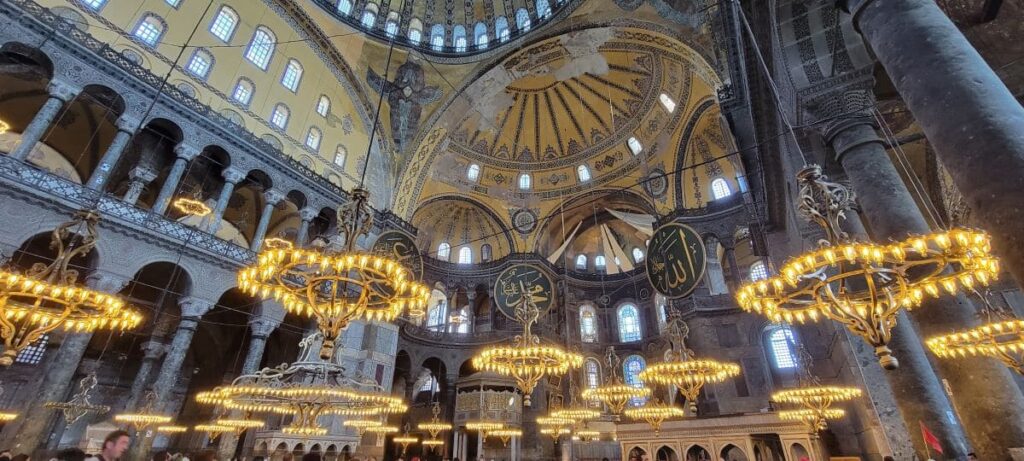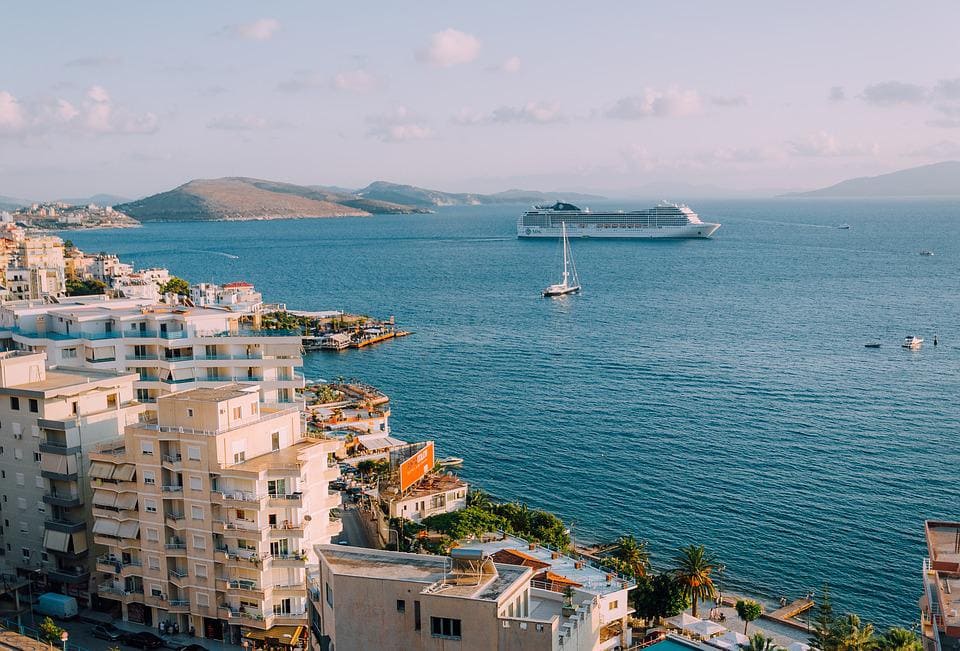Istanbul is a marvelous city. To walk down its winding streets is to stroll through a living time capsule of culture and history. This popular cruise destination has countless landmarks waiting for your exploration. We have created a list of five sites you must visit while touring Istanbul.
Located at the southern mouth of the Black Sea, The modern capital of the Republic of Turkey is cloven in two by the Bosphorus Strait. On the western shore is Europe, and on the Eastern side is Asia. A series of cable suspension bridges connect the two continents like sutures. Due to the region’s strategic value as the main trade route from the Mediterranean Sea into Central Asia, Istanbul has been the seat of power for multiple empires. The remains of which make up the bulk of our list.
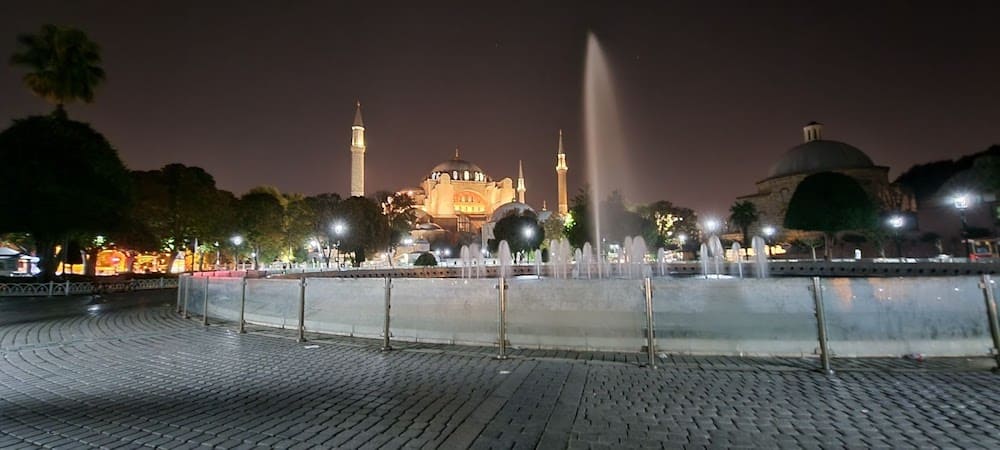
Hagia Sophia
Perhaps the most significant edifice in the entire region, the Hagia Sophia is Istanbul’s most recognizable landmark. Originally constructed in the year 537 by the Roman Emperor, Justinian, as the central cathedral of the Byzantine Empire. The Hagia Sophia was the world’s largest enclosed room and one of the first to utilize a full pendentive dome. The structure was converted from a Cathedral into a mosque and minarets were added in the 1500s.
It is said that the construction of the Hagia Sophia changed the world of architecture. It became the model for all Greek Orthodox Cathedrals as well as Ottoman Mosques. This influence can be seen among the thousands of Modern Mosques and Cathedrals still present in the city. Christian, Greek, and Byzantine imagery are present throughout the Hagia Sophia and around the city.
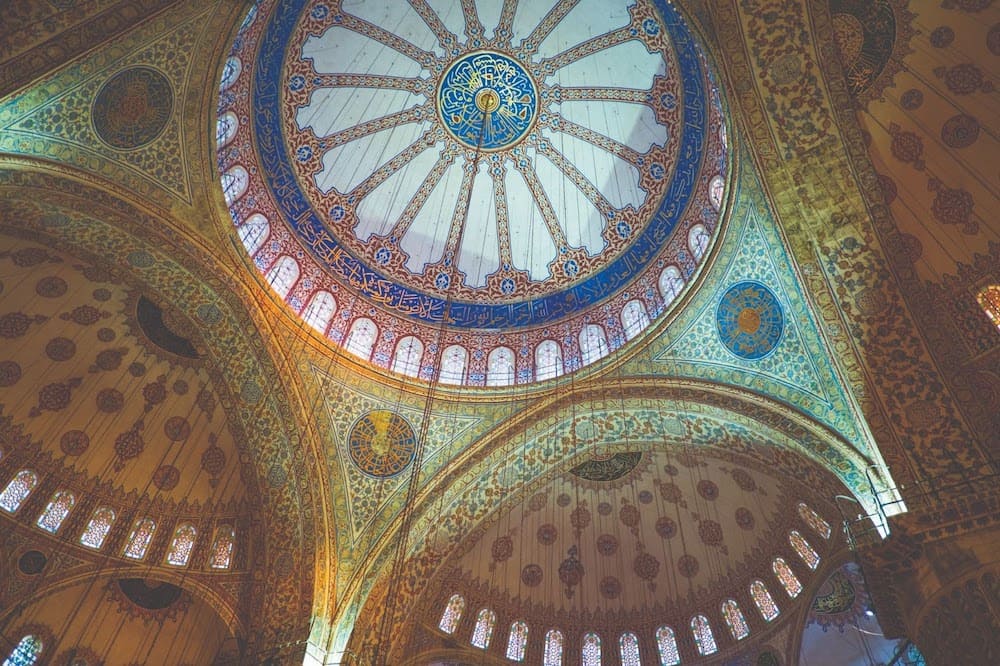
Blue Mosque
Across Sultanahmet Square from Hagia Sophia, you will find the Blue Mosque. Officially named the Sultan Ahmed Mosque. Constructed in the early 1600s, this Ottoman-era Mosque remains a functioning religious site attracting throngs of tourists and supplicants. Its multiple domes and six minarets make it one of the most recognizable structures on the waterfront. The beautiful imperial mosque’s interior features awe-inspiring domed ceilings, intricate mosaics, and fascinating Islamic artwork.
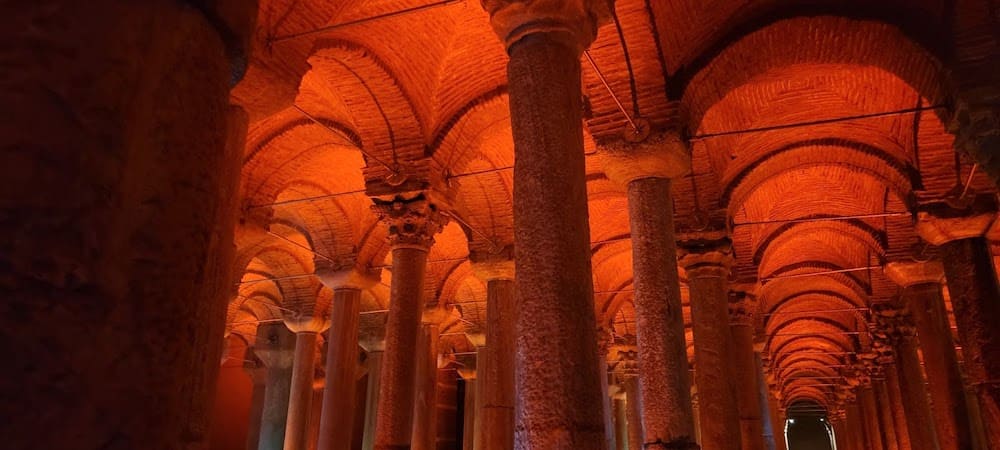
Basilica Cisterns
There are many ancient cisterns throughout Istanbul that served as the original civic water supply for the city. The most notable are the Basilica Cisterns. Conveniently located across the road from the Hagia Sophia and the Blue Mosque, you will descend beneath the modern city streets into the amazingly well-preserved, man-made aquifer that was fed by the roman aqueduct to provide fresh water for the Byzantine Capital. The ceiling of this massive subterranean chamber is suspended by Greek and Roman columns salvaged from throughout the Ancient Roman Empire.
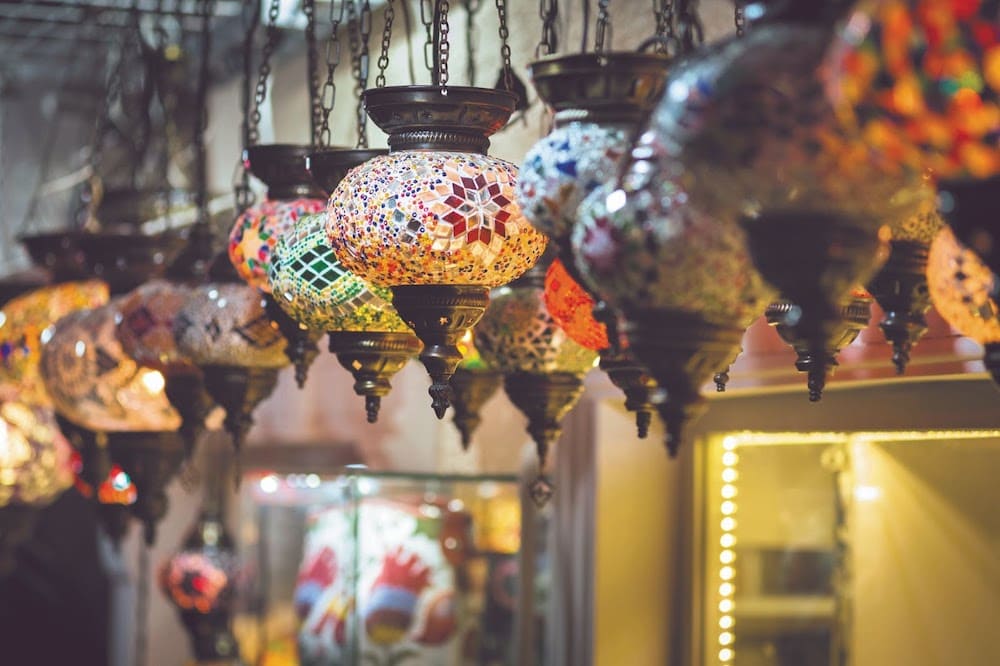
Grand Bazaar
One of the world’s most historic and well-known marketplaces, the Grand Bazaar and neighboring Spice Bazaar are must-visit destinations for souvenir shopping attracting as many as 400,000 visitors a day. Construction of the Grand bazaar commenced shortly after the Ottoman Conquest of then Constantinople in the mid-1,400s. Due to the city’s location as the terminus of the Silk Road, this marketplace was a major commercial center for the trading of textiles, spices, handicrafts, and eastern treasures from as far as the Orient. Today tourists can still make their way through stalls overflowing with handwoven rugs, handmade Turkish delight, delectable Baklava, ornate Turkish Coffee sets, and countless other authentic and “not so authentic” souvenirs.
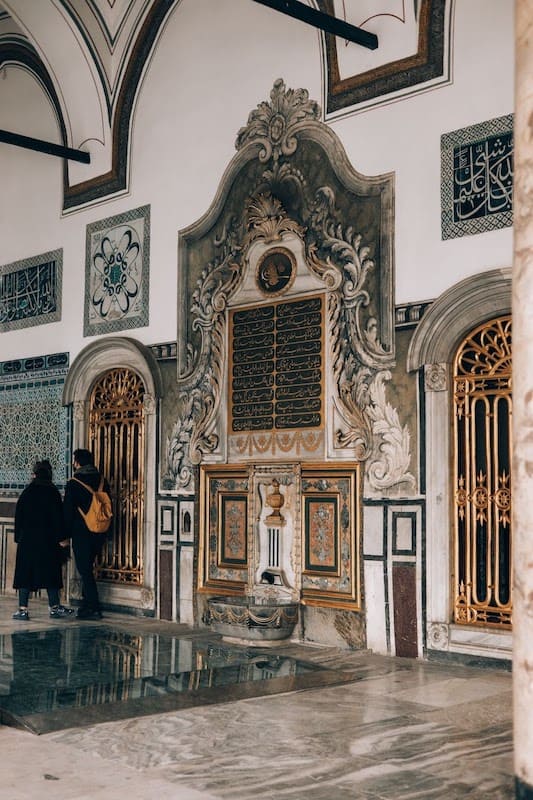
Topkapi Palace
Serving as the administrative center of the Ottoman Empire and the home of the Sultans during its hay day in the 1700s, Topkapi Palace, today is the largest museum in Istanbul and has been named a UNESCO World Heritage site. The Palace Grounds can be compared to the European Palaces of Versailles and The Hermitage. The complex is composed of hundreds of rooms, many of which are accessible to the public. The former Ottoman Imperial Harem located on the palace grounds is currently home to two of the more famous museum displays. The Spoonmaker’s Diamond and the Topkapi Dagger are located in this area, known as the hazine. The museum collection also contains Ottoman clothing, artwork, manuscripts, armor weapons, and many other relics of the empire.
Istanbul is not just ancient history. It is one of the most lively and energetic cities you can hope to visit. The city truly does not sleep. We wandered the streets until the early hours of dawn. Restaurants, shops, street vendors, and young Turks fishing from the bridges were everpresent. The energy of the street culture in Istanbul is a truly rewarding experience. For more information on how you can visit the Capital of the Republic of Turkey keep reading our blog or contact the destination experts at Luxury Cruise Connections.
